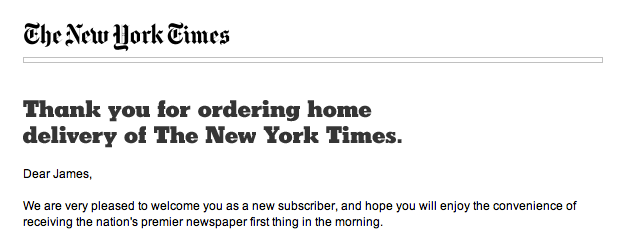Quality Content Comes at a Cost
“This week marks a significant transition for The New York Times as we introduce digital subscriptions. It’s an important step that we hope you will see as an investment in The Times, one that will strengthen our ability to provide high-quality journalism to readers around the world and on any platform.” The New York Times
A long time ago, Napster taught the world that the music we used to buy on records, tapes or CDs could be downloaded for free. Some of us capitalized on this and filled our computers and iPods with music. No one felt nefarious, the content we wanted was easily accessible and we clicked the button.
We’ve become accustomed to consuming music and other forms of valuable content for free. Some of this is a good thing, such as libraries or Wikipedia. However, if everyone has free access, there is fear that eventually the quality of that content will deteriorate and ultimately become superfluous.
Take photography, for example. When I first started shooting I knew that I had 36 exposures and that each shot should be metered, composed, and then pondered for a moment before the shutter was fired. Conversely, my iPhone has captured 2,117 images. It’s free, available, and easy. But it leads to a great deal of haphazard images with very few decent photos peppered throughout.
Like my iPhone photos, it’s rare to create anything of quality when skill, attention, deliberation and time aren’t applied during its production. I bought the home delivery edition of The Sunday Times to support their continued efforts in outstanding journalism. Good content is valuable and shouldn’t be commoditized. If we expect future works to be of the highest caliber we shouldn’t be offended when the people who provide it expect compensation.
 James Dixson, Principal / CMO at Atomicdust, has experience in all aspects of marketing, with core knowledge in interactive marketing, the world wide web and all things Apple.
James Dixson, Principal / CMO at Atomicdust, has experience in all aspects of marketing, with core knowledge in interactive marketing, the world wide web and all things Apple.

